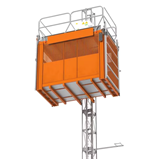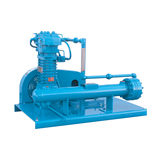Members of the Clean Energy Future group answered some questions about the national Clean Energy Future for Australia report and just how viable the transition to dramatically cleaner energy production in our lifetimes is.
What is new about this study?
This study is the product of an unprecedented alliance of energy associations and an environmental organisation. The groups have collaborated to unify the country behind a thirty-year programme of strategic investment for clean energy technology and new infrastructure.
There is no previous study that outlines a bold new energy policy to power an expanding economy and removes our over-dependence on coal.
This study suggests viable solutions for the urgent need to cut greenhouse gas pollution levels.
Why do we need to find new energy sources?
Energy used to generate electricity and directly to provide heat is the largest producer of greenhouse gas pollution in Australia - about half of the 543 million tonnes of carbon dioxide produced annually comes from coal-fired power stations and the use of fossil fuels directly for industrial, commercial and residential activities. It is also the fastest growing source of this pollution causing our planet to overheat.
Generating electricity through burning coal is the biggest contributor to greenhouse gas pollution from stationary energy. Australia's heavy reliance on coal means we are one of the biggest greenhouse gas polluters (per person) in the industrialised world after the US.
Coal has served our energy needs well up until now but in a world where the amount of carbon dioxide released into the atmosphere needs to be constrained, Australia must look to new technologies to meet our needs without producing this pollutant.
What can take the place of coal?
The Clean Energy Future for Australia study has found that Australia can readily meet its energy needs from a range of commercially proven fuels and technologies. A scenario that cuts emissions by 50% includes:
The energy generated from the combustion of natural gas can provide 30% (including cogeneration) of our electricity by 2040.
The energy released from biomass from agriculture and plantation forestry residues can provide 26% (excluding cogeneration) of our electricity by 2040
The energy of wind captured by turbines can provide 20% of our electricity by 2040
The energy of flowing water harnessed through hydroelectric facilities can provide 7% of our electricity by 2040 and,
The energy of the sun captured with photovoltaic and solar thermal systems can provide 5% of our electricity by 2040.
Energy generated by 15% co-generation plants was largely driven by about 13% gas and 2% biomass.
Coal (9%) and petroleum (1%) will continue to play a small role in electricity generation. Most requirements for heat can be met by natural gas, biomass and solar energy, with the use of coal restricted to metallurgical processes, while petroleum and natural gas will both continue to be important for providing direct motive power, particularly in agriculture and mining. The key to a clean energy future is to draw on a full range of technologies and cut energy wastage.
Would a clean energy future affect Australia's economic growth?
The study presumed that Australia's economic growth will continue at 2% annually between now and 2040, which is in line with official estimates. The study is also based on the energy needs of an increasing population and growth in all of our current industry sectors, including coal mining.
To achieve the clean energy future detailed in the plan we will need new investment in a range of energy infrastructure and this will create new business opportunities and jobs. The clean energy future will require a more efficient use of energy by cutting the amount of energy we use will also provide savings for businesses and consumers.
The International Energy Agency estimates it would cost $US16 trillion (AUD$20 trillion) over the next 30 years to deliver clean energy around the world. This equals only 1% of world gross domestic product. This average can be broken down into less than 0.5% of GDP for developed countries.
Do we need to shut down existing coal-fired power stations and will there be massive job losses?
The clean energy future plan takes until 2040 to deliver the 50% cut in greenhouse gas pollution because it does not presume early closures of existing coal-fired power stations. It presumes that power stations have a 30 to 40 year lifespan - stations built recently are still there in the 2040 Clean Energy Future Plan (comprising 9% of electricity supply in 2040).
While there are jobs in the construction of coal-fired power stations very few long-term jobs are available in the operation of these largely mechanised plants. Employment in coal fired electricity has declined by 50% since 1991. Clean energy alternatives provide new jobs. Wind energy developments, for example, provide 2 to 3 times more jobs than coal for each unit of electricity generated. (Sustainability Centre, 2003)
What are the benefits and who stands to gain from switching to clean energy?
A major reduction in greenhouse gas pollution is one that benefits all Australians. Rural and regional Australia stands to gain most from the creation of new jobs and industries in a switch to a clean energy future.
The energy released from biomass from agriculture and plantation forestry residues can provide 26% of our electricity by 2040. It is estimated that the harvestable stubble residues from Australian grain crops (mostly wheat) and cotton in 1996-97 amounted to 68 million tonnes. These agricultural wastes could be used locally to generate a large proportion of Australia's future electricity needs. This will require new infrastructure in regional areas of Australia.
Wind power also brings development and jobs to the regions. The energy of wind captured by turbines can provide 20% of our electricity by 2040. A wind farm, when installed on agricultural land, has the lowest environmental impact of all energy sources. Australia has better wind resources than most parts of Europe.
Wind farms are compatible with grazing and almost any crop that would be suitable for a site that would also support a wind farm. With the clean energy future plan the cost of wind power is expected to decrease even further and it will become economic to develop it on sites with lower average annual wind speeds. This will open vast new areas of inland pasture which do not suffer the siting issues of more highly visible and dramatic coastal landscapes.
What policies need to be changed? Who needs to change them?
The Clean Energy Future Plan investigates technically feasible options based on Australia's land and fuel resources and the energy generation technologies commercially available at present. However, this low greenhouse pollution future will not happen without policy changes by all levels of government. It also needs the support of the Australian community to make this change.
Policies urgently needed include:
Stopping energy wastage with strong new mandatory efficiency laws for appliances, equipment and buildings.
Laws to require the widespread use of cogeneration (small turbines on the site where the energy is used) in industries
Strict greenhouse gas intensity limits on any new proposal to build a coal-fired power station or to refurbish an existing one - these limits would require less carbon dioxide emissions per unit of electricity than the best existing combined cycle natural gas power station.
Reform of the National Electricity Market laws to level the playing field between existing coal-fired power stations and renewable or distributed electricity generation.
Laws to encourage continuing investment in renewable energy generation - an increase in the current renewable energy target from 2% by 2010 to 10% by 2010.
Will ratifying the Kyoto Protocol help the switch to a clean energy future?
Yes. Ratifying the Kyoto Protocol sends a signal to the power sector and electricity infrastructure investors that Australia is legally bound to our Kyoto Protocol target. This is important for beginning the shift of investment to cleaner forms of energy. The business community wants certainty in energy policy - ratifying the Kyoto Protocol will outline the legal constraints on greenhouse gas emissions from this point forward.
Meeting Australia's Kyoto Protocol target is not, however, enough over the long term to drive the reform required in the energy sector to meet the clean energy future. The target is too lenient and will largely be met through reductions in landclearing. There must be additional new national measures to improve energy efficiency and policies to ensure any new power stations have very low emission levels for the energy they produce.
Why not just use geosequestration to solve our emission problem?
This study has not addressed geosequestration as an option - the study only examined proven and commercially available technologies.
Geosequestration does not fall into this category. Nor do a range of other "sunrise" technologies such as hydrogen fuel cells and wave power. All of these technologies may be available in the future and may play a useful role but we can not wait for them before beginning the move to a clean energy future.
The risks of burying greenhouse gases underground need to be further investigated - pilot projects need to demonstrate that carbon dioxide will not escape and cause an accident or leak over time and continue to cause global warming.
Some geosequestration is likely to be very cheap but some will be prohibitively expensive depending on the site and the source of the carbon dioxide.
Source: World Wildlife Fund

-160x160-state_article-rel-cat.png)
-160x160-state_article-rel-cat.png)










-160x160-state_article-rel-cat.jpg)
-160x160-state_article-rel-cat.png)






